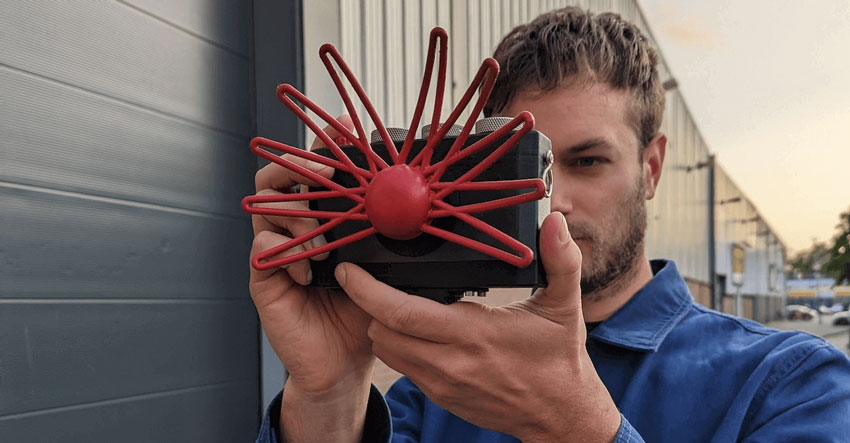The camera that can’t be referred to as a camera by definition
In a remarkable fusion of creativity and technology, Danish designer Bjørn Karmann has introduced the world to “Paragraphica” – a groundbreaking physical AI camera that challenges the conventional norms of photography.
Stepping away from traditional sensor and lens configurations, this extraordinary device harnesses the power of location data and artificial intelligence to create captivating visual representations of specific moments and places.
Karmann has crafted this context-to-image camera prototype, showcasing his ability to blend creativity and cutting-edge technology in a single device. The announcement of “Paragraphica” caused a stir when Bjørn Karmann took to Twitter to introduce his creation.
At the heart of Paragraphica lies a sleek design that offers users a unique and immersive experience. Through the viewfinder, real-time descriptions of the current location are displayed, providing a creative portal into the process.
With a simple press of the trigger, the camera springs to life, utilizing data manipulation and AI algorithms to transform the textual description into a captivating visual representation.
The functionality of “Paragraphica” is driven by seamless integration with open APIs, which gather crucial data from the surrounding environment. Details such as addresses, weather conditions, time of day, and nearby landmarks are extracted, forming the basis for a rich and vivid paragraph that encapsulates the essence of the place and moment.

This textual composition serves as the foundation for an intricate text-to-image AI, which brings the paragraph to life by translating it into an awe-inspiring “photo.”
The resulting images captured by “Paragraphica” evoke a sense of nostalgia and emotion tied to the location, while also possessing a surreal quality that distinguishes them from traditional photography. Through the lens of the AI model, these photos provide a unique perspective, offering a glimpse into alternative interpretations of reality.
Inspired by the star-nosed mole, an incredible creature that navigates its underground habitat using finger-like antennae, Bjørn Karmann emphasizes the challenges humans face when attempting to empathize with diverse intelligences and their distinct ways of perceiving the world.

“Paragraphica” serves as a bridge to these alternative perspectives, inviting users to explore the intricacies of their surroundings through the lens of different intelligences.
Equipped with three physical dials reminiscent of traditional camera controls, “Paragraphica” empowers users to fine-tune their creative output. The first dial adjusts the radius within which the camera explores places and gathers data, providing a similar experience to adjusting the focal length of a lens.
The second dial introduces a noise seed generator, offering users the ability to add a unique texture to their images, akin to the film grain effect. Lastly, the third dial governs the guidance scale, allowing users to control the AI’s adherence to the paragraph, creating variations in focus and sharpness.

Bjørn Karmann has also created a virtual version of “Paragraphica” accessible through web browsers. Users can explore the innovative capabilities by interacting with the simulated viewfinder, where real-time location descriptions are transformed into visually stunning compositions using AI algorithms.
The virtual camera offers an accessible and engaging way to experience the transformative power of “Paragraphica” and its ability to capture the essence of a moment through AI-generated “photos”. You will be required to allow location access when prompted by the browser. Also note that it may not work all the time for all the locations.

The tangible manifestation of “Paragraphica” is a result of meticulous hardware and software integration. The camera incorporates a Raspberry Pi 4, complemented by a 15-inch touchscreen and custom electronics, all housed in a 3D printed casing. The software architecture comprises Noodl, Python and Karmann made use of Stable Diffusion API to make it all work.



